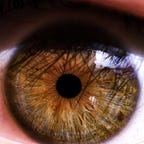Mrs. Dalloway in Bond Street and the idea of Epiphany
Virginia Woolf, born in London 1882, started writing during the emergence of a new era, that was the Modern Era, in which there was a rise on urbanism, technology, warfare and consumerism. In order to accompany these new ways of living and understanding reality, she began developing new literary forms, aiming to reach this modern type of consciousness. A great problem in Virginia’s life was her mental health, often attributed to the death of her parents and sexual abuse. After one of her major breakdowns, she moved to another town with her husband Leonard Woolf, where they acquired a hand-press, an old machine used for printing. After that they founded what was called the Hogarth Press, and under this name, Virginia and Leonard published 527 titles up to 1946, a lot of these being Virginia’s own works. In her essay “The Death of the Moth”, published in 1942, we can clearly see a main characteristic of Virginia’s writing, which is paying attention to the ordinary and mundane things in life. In short, it’s a story about a person watching a moth fluttering from side to side while stuck on a window-pane, while using that simple situation to make some existentialist observations.
The short story Mrs. Dalloway in Bond Street can be viewed in a very interesting perspective when the reader takes the concept of epiphany into consideration. Throughout her whole stroll down Bond Street, Clarissa Dalloway sees people, things and events that, although seemingly meaningless, have a very deep impact on her thought process and evoke memories and feelings that give us nothing short of a very insightful analysis of society at the time. This thorough study of people and the world through Mrs. Dalloway’s eyes is achieved by Woolf through the use of the narrative method known as “stream of consciousness”. Hence, in our presentation, besides showing the most important events, characters and aspects of the short story, we dedicated a lot of the time to explaining how this technique can be used to delve deeper inside the character’s mind and see things from his most intimate perspective.
